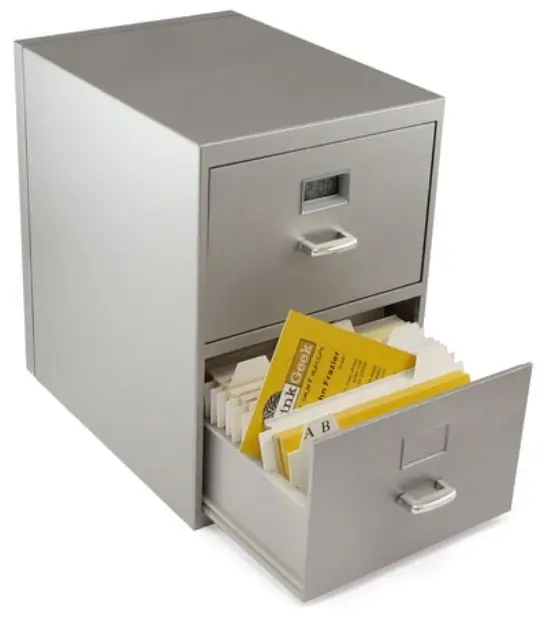- Author Antonio Harrison [email protected].
- Public 2023-12-16 07:44.
- Last modified 2025-01-22 21:44.
Information cards are an old invention, without which it is practically impossible to write a book or conduct scientific research today. The key to effective creative work is well-organized and well-structured information. With the advent of electronic means of storing and processing information, new opportunities have arisen for compiling and maintaining a personal card index, but the general principles of organizing information have not changed.

Instructions
Step 1
Determine the form of information storage that is convenient for you. A storage unit can be a newspaper or magazine clipping, a special card, a sheet of paper, a notebook, a magazine, a synopsis, a text file. The physical implementation of the filing cabinet can be different: a folder for papers, a notebook, a drawer for cards, a set of electronic folders and files.
Step 2
One of the primary requirements for a card is the ease of perception of the text. Entries on cards can be kept in neat handwriting, typed, typed on a computer keyboard and then printed or saved to a file.
Step 3
For a filing cabinet, made in the form of folders, which stores reprinted or cut material, make a special rack or use several wall shelves. Each folder should contain materials on a specific topic, and the topic should be indicated on the front side of the folder and on its spine. Such a filing cabinet should provide the ability to quickly find the information you need.
Step 4
If you intend to use standard library cards, make a special box that fits the cards. As you accumulate material and grow the information fund, you may need to build a special locker, like those made for library catalogs. The advantage of this type of filing cabinet is ease of use and access to information. The disadvantage is the small amount of information that can fit on the card.
Step 5
Provide for the creation of a kind of preliminary accumulator. In this case, any information you like goes to the drive without preliminary classification. Periodically revise the drive, review the materials and put them in thematic folders. If information should be placed in folders with different topics, make a copy of it.
Step 6
Consider another option for keeping a filing cabinet (without prior accumulation). In this case, the clippings are pasted into the notebook as soon as they are selected. Each card receives two numbers: the number of the notepad and the serial number of the informational message in the notepad. In parallel, a rubricator is being formed; write down the numbers of the cards and their themes in it. Store large printed materials in separate folders, and write only a short message and a link to the corresponding folder in a notebook.
Step 7
Keeping an electronic filing cabinet is free from many of the drawbacks that paper cards have. Computer technologies make it possible to form a database on various grounds and structure the material by topic. A prerequisite for an electronic information fund is the creation of a duplicate archive, which should be transferred to removable media. In this case, the risk of information loss if the hard disk of the computer is damaged is reduced.






